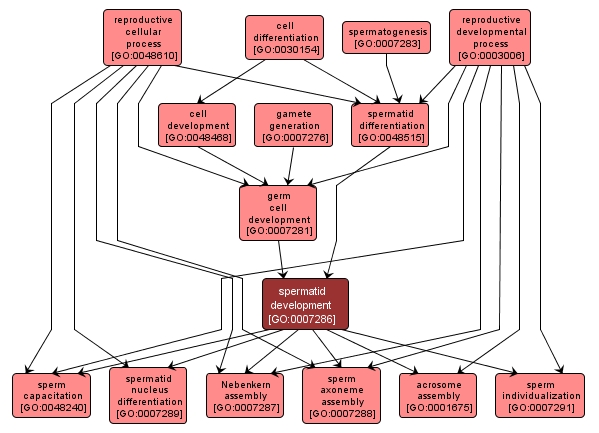GO TERM SUMMARY
|
| Name: |
spermatid development |
| Acc: |
GO:0007286 |
| Aspect: |
Biological Process |
| Desc: |
The process whose specific outcome is the progression of a male gamete over time, from initial commitment of the cell to a specific fate, to the fully functional differentiated cell. |
Synonyms:
- spermatid cell development
- spermiogenesis
|
|

|
INTERACTIVE GO GRAPH
|














